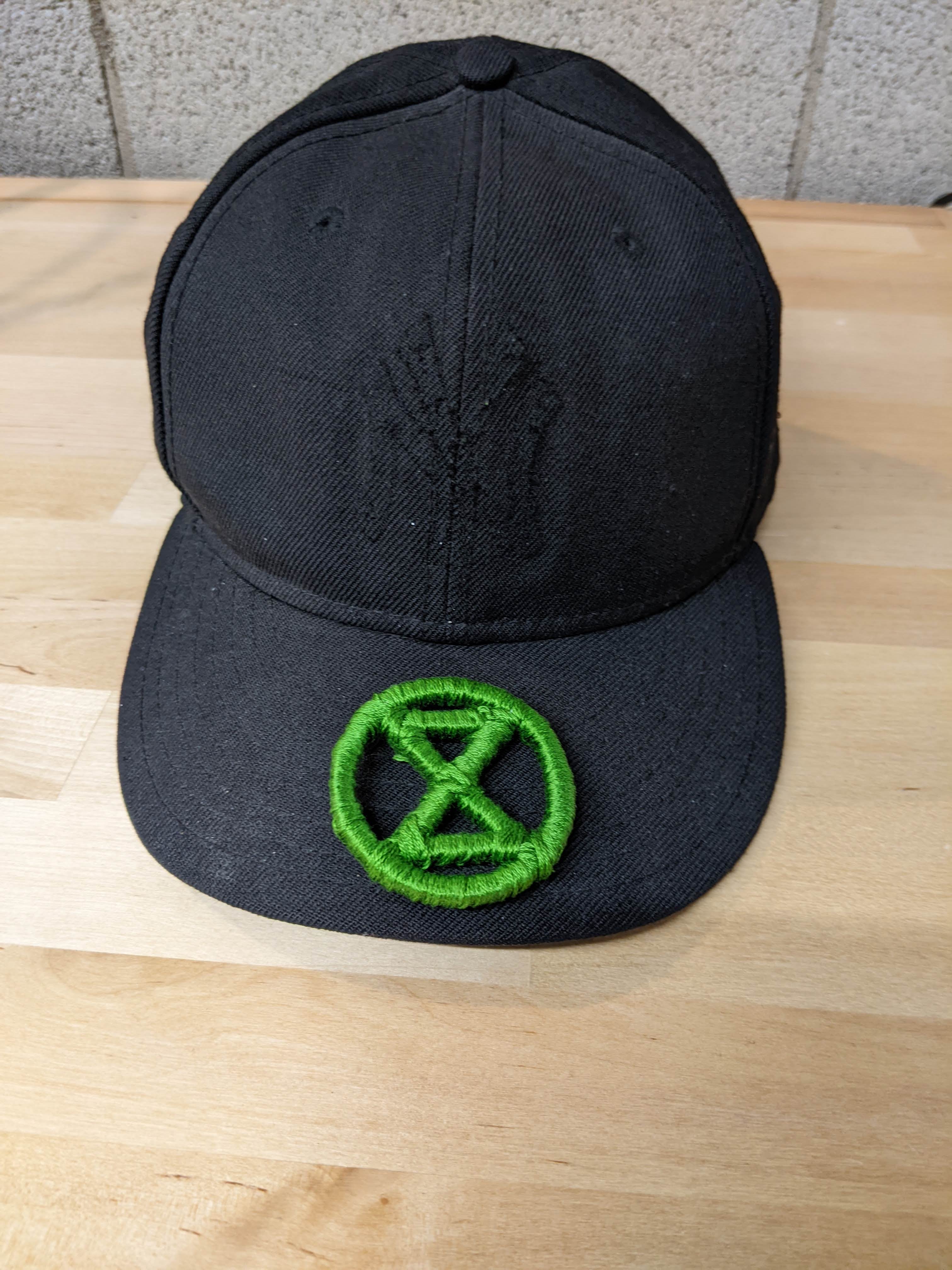My brother recently suggested I could upgrade my hat game. He was right: the crusty, adjustable-strap White Sox hat I’d worn for years was due for replacement. I liked the fit and look of the New Era 59Fifty wool ballcap he lent me. But I didn’t care to advertise for a team (a.k.a. company) I don’t care about, nor did I wish to invite small talk about sports.
My mission: replace the logo on an official New Era baseball cap with one of my own design. It was a fun mixed-media project, part art, part craft, and part hack.
I ordered a gently-used cap from eBay. If you don’t care about team logo, the choices are vast! I purchased a 1990s vintage black hat with a black Yankees logo for $13.

First I removed the existing logo. I used a seam ripper to slice threads and pliers to yank on loose ones. When removing logos from other garments, I rip stitches from the back, but that wasn’t possible here due to the white backing liner on the inside.

This part was slow going. All of the yanking with my dominant hand bent the cap slightly. I probably should have done more slicing and snipping and less brute force with the pliers.

The result wasn’t perfect. A few threads from the logo remained and I pulled out a little material from the hat itself. But it sufficed once I covered it up. I wonder if contrast would have helped. Would a white logo on black hat work better (because the white logo stitches would be easier to selectively remove) or worse (anything left over would stick out)?

Next I made the new logo, using the community laser cutter at All Hands Active. I downloaded the Extinction Symbol and loaded it into Lightburn, which auto-traced the outlines. I was ready for the laser.
I cut the logo out of corrugated plastic sheeting, often called Coroplast. Most plastic is unsafe to cut on a CO2 laser, but Coroplast is okay. In Ann Arbor, unscrupulous companies print advertisements on this plastic and illegally place them in the public right-of-way near highway off-ramps and busy intersections.
I considered 3D-printing the symbol. That way I could have controlled its depth – the Coroplast stock is a tiny bit thicker than a New Era-style logo – and added touches like tiny holes through which to sew the logo to the hat. But that would have taken a while to design and print. And I liked the spirit of reusing roadside litter.
The laser burned nearly through and I finished it with an X-ACTO knife.


Next, I wrapped the logo. I used a small bundle of embroidery floss, I believe a 8.7 yard bundle of 6-stranded DMC 25. That was exactly enough for this project.

A crafty friend at Workantile suggested I wrap the logo before attaching it to the hat. Brilliant!


I got it almost entirely wrapped, then tacked it onto the hat in a few places with the same thread. Finally, I completed a few tricky wrapping stitches that were easier once the logo was anchored to the hat.
The wrapping is imperfect and in one spot I pulled too hard and compressed the plastic. But from across the room it passes for a commercially-made hat!

I’m pleased with how it turned out. I have a comfortable, well-made hat and instead of promoting a sports franchise, I’m starting conversations about living during the Sixth Mass Extinction. Seeing the logo reminds me to think timefully.
If I hack another hat, I’ll consider 3D-printing the symbol to try to precisely match the depth of the hat’s original logo. And I’d start with a hat that isn’t black-on-black so the New Era logo on the side pops: I enjoy the tension and confusion that comes from this being a mass-produced object with a hand-made logo.
















